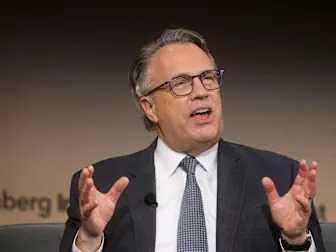
Fed Officials Signal Rates Likely to Stay on Hold Until at Least September
(Bloomberg) --
Most Read from Bloomberg
Two Federal Reserve officials, including New York Fed chief John Williams, suggested policymakers may not be ready to lower interest rates before September as they confront a murky economic outlook.
“It’s not going to be that in June we’re going to understand what’s happening here, or in July,” Williams said Monday at a conference organized by the Mortgage Bankers Association. “It’s going to be a process of collecting data, getting a better picture, and watching things as they develop.”
The Fed’s next three meetings are in June, July and September.
Investors now see less than a 10% chance of a rate cut when policymakers next meet June 17-18 in Washington. Based on pricing in fed funds futures, investors expect two quarter-point reductions by year’s end, down from the four seen at the end of April.
Atlanta Fed President Raphael Bostic struck a similar tone in an interview with Bloomberg Television on Monday, signaling an unwillingness to move rates for some time.
If the Trump administration’s ongoing trade negotiations drag on, “that starts to push much further into the summer, in which case we won’t actually know what the true effects are going to be for several months after that,” Bostic told Bloomberg’s Michael McKee.
Earlier Monday, Bostic noted policymakers would need to wait “three to six months” to see how things settle. He said it’s still possible that trade talks could move forward more quickly, lowering tariffs more than forecast.
“In that case we may be able to pull forward some of our actions, because there may not be as much that we need to do in terms of managing the price level,” he said.
Williams continued to stress that uncertainty was hindering not only policymakers, but also firms and households as they struggle to predict how tariffs and other policies from the Trump administration will reshape the US economy.
Fed officials held interest rates steady in early May, expressing heightened uncertainty largely due to tariffs. Policymakers also see risks of both higher unemployment and inflation.
The Trump administration recently reached a temporary agreement with China to lower tariffs on many imported goods. Negotiations are ongoing with key trade partners halfway through a 90-day pause on reciprocal levies.
Williams, like many of his colleagues, said the Fed can take its time in assessing new data. While he acknowledged inflation has been coming down and the economy is close to full employment, he’s monitoring delinquencies and the appetite for consumer spending.